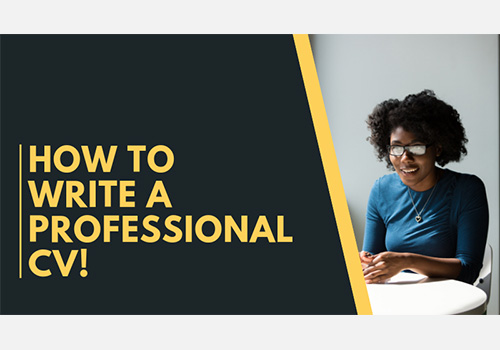
You’ve made up your mind: you want to embark on a wonderful new role, and just need to find the perfect place to use your talents. There are loads of vacancies listed that you know you’re perfect for. You’ve got the skills and the knowhow, but no one has offered you an interview… yet.
There could be a few reasons for this, the job may have already been filled, or the company may have decided that they didn’t need an extra person after all… but it could also be that your CV needs a makeover. A CV revamp could be just the thing to emphasise your skills, make you stand out from the crowd and get the hiring manager excited to meet you. We’ve been analysing CV for far too many years and have been able to create this quickfire guide to help you get a foot in the door and hopefully bag some interviews!
1. Write positively and sound sure of yourself. If you doubt yourself, an employer has no reason to have confidence in you.
2. Never lie in a job application – not even a little bit! Candidates who are tempted to fabricate experience to bag a dream role are easily found out and will be instantly dismissed from the application process.
3. Always use clear labelling, and a common font that is easy to read, like Arial or Times New Roman. A potential employer or recruiter is likely to be strapped for time – they are hiring for a position to help them, after all – will be discouraged from even reading your CV if it’s an effort to read or understand.
4. Your CV should be three pages long at the very most. You need to write in bullet points and make sure that you are conveying only the most vital information.
5. Tailor your CV to fit each role that you’re applying for. It may be time-consuming but sending off 5 well-written and thought out CVs normally gets better results than 10 generic applications.
6. Get someone else to check your spelling and grammar for you. Simple mistakes are red flags for potential employers that you lack attention to detail and may lead to concern you may fail to properly check client documents or important correspondence in your new role.
Personal details:
At the top of the page you should include your full name, location, email address and phone number. Make sure these details are correct and easily accessible, a potential interviewer may fall at the first hurdle of contacting you to arrange an interview or screening call.
Summary/personal profile:
A short introduction that should follow your contact details. It should be no more than two sentences but should say a little something about you, your career goals and aims, and what makes you suited to the role you are applying for. The more specific to the role you can be, the better.
Employment history and work experience:
Be sure to list your work history, including the names of previous employers, dates of employment and your main responsibilities in that role. Start with your most recent job and work backwards from there. You don’t need to detail every single job you have ever done, focus on your most recent and most relevant ones. Work experience in a catering environment is unlikely to help you get a job in the IT industry.
Education, professional qualifications and other skills:
In this section, you should list any notable academic or professional qualifications that you have. It is important to include all the dates and names of the institutions where you studied. This section is also ideal for listing languages or other transferable skills, such as ICT experience. List these in order of importance putting the most important first and the least important lower down.
References: Commonly found at the bottom of CVs.
A good trick to save space is to include a line stating, ‘References available on request’. This way if you get an interview, you can supply reference contact details at a later date. If you do supply contact details, be sure to tell the person that you are listing them as a reference. A surprised referee is rarely going to show your best side.
Now for the more difficult part; what to leave out. You need to make sure that you only include relevant information. As a rule of thumb, you can exclude your hobbies, health, sexual orientation, political views, or anything that could even be mildly offensive.
Once you’re happy and ready to go with your brand-new CV, have a quick search on our job board and see if there are any positions that can get you excited about Monday mornings again!


